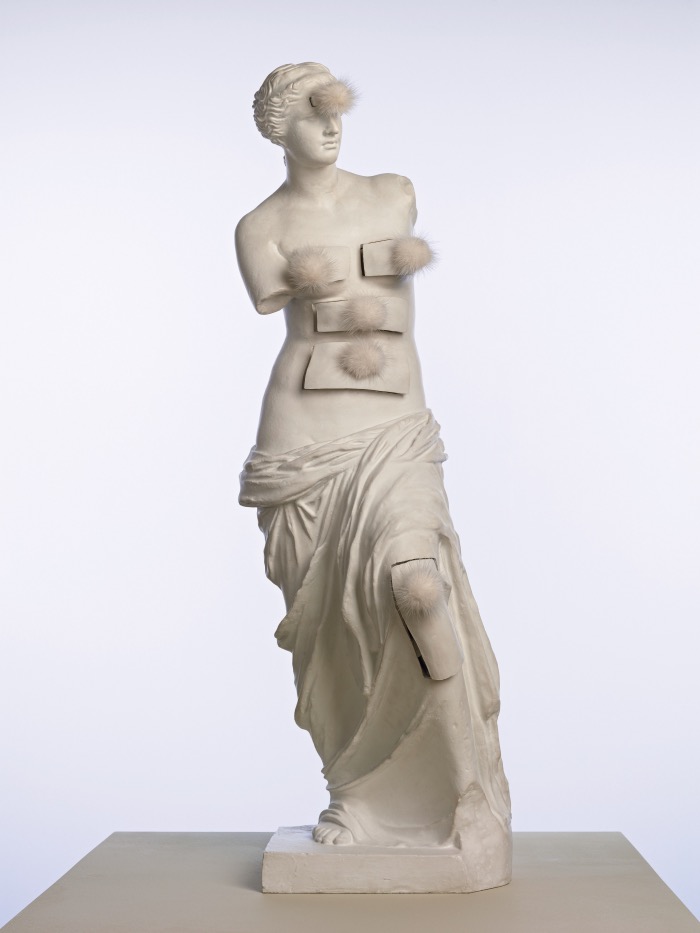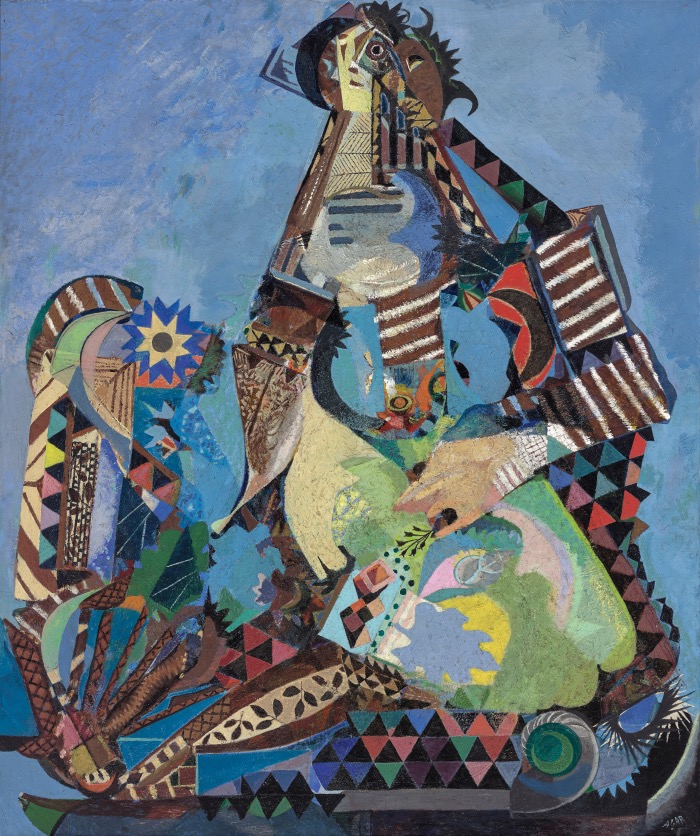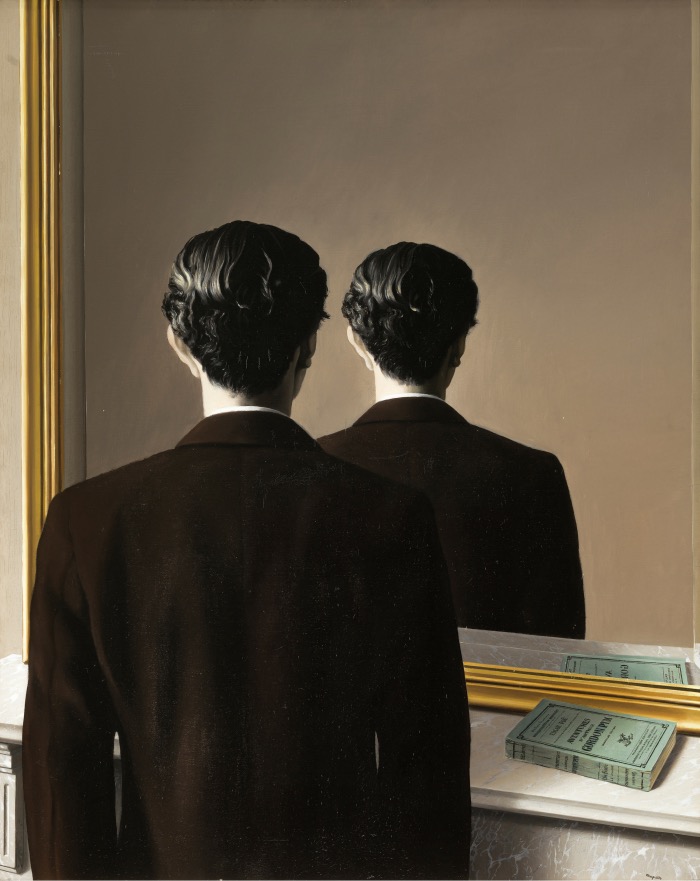Surrealism as an artistic movement: characteristics
Surrealism as an artistic movement is fundamentally dream and irrationality.
To describe its characteristics is to delve into a territory where reason is lost in the meanders of what is not rational, generating unexplored worlds.
These are the characteristics of Surrealism

Salvador Dalí, Vénus de Milo aux tiroirs. 1936 (1964). Bronzo, pittura e pelliccia. Museum Boijmans Van Beuningen, Rotterdam © Salvador Dalí, Gala-Salvador Dalì Foundation by SIAE 2023
Surrealism is (…) “pure psychic automatism, through which one proposes to express, in words or writing or in any other way, the real functioning of thought. Command of thought, in the absence of any control exercised by reason, beyond all aesthetic and moral concern.”
André Breton, Surrealism Manifesto, 1924
Surrealism was strongly influenced by the ideas of psychiatry and psychoanalysis that developed in the late 19th and early 20th century thanks to the studies of Sigmund Freud, Pierre Janet and Carl Gustav Jung.
Artists, thanks to these studies, explored the unconscious and evoked dream worlds, in a perfect fusion of psychology and art.
PSYCHANALYSIS
Salvador Dalí’s artistic vision is interesting.
Dalí was interested in Freud and also painted dreamscapes, but realised over time that his painting technique was too slow and that the images became conscious. Consequently he developed his ‘paranoid-critical method’, which in fact led him to create multi-interpretable and ‘layered’ images.
His Venus de Milo with Drawers, 1936, is a work made using this method.
THE IRRATIONAL AND THE DREAM
The methods used by the artists of Surrealism to gain access to the unconscious were diverse. From games of chance to collage, frottage, writing and drawing from the stream of consciousness. Some artists sought means and ways to hallucinate or used psychotic experiences in their work.
One of the most important masterpieces for understanding this is Eileen Agar’s Sitting Figure.
In 1928, Eileen Agar met André Breton and Paul Éluard in Paris. At the same time, the fossils and bones of prehistoric creatures in the Jardin des Plantes were fascinating her with their ingenious abstract design. From this point onwards, Agar combined in her work structures of ancient animals, plants and seaweed with the aerial world of her imagination, seeking to bring Western culture closer to nature once again.

Eileen Agar, Seated Figure. 1956. Olio su tela / Oil on canvas. Museum Boijmans Van Beuningen, Rotterdam
THE DESIRE
The Surrealists explored their sexuality to access areas that bourgeois society had long repressed.
Like many other surrealists, Man Ray immersed himself in an intoxicating world of love and desire, practising free love and photographing women in the most sensual ways.
Man Ray was also fascinated by erotic fetishism and the sadomasochist novels of the Marquis de Sade, which he saw as a true expression of repressed desire.
PRIMITIVE ART AND SOUTH AMERICA
For the Surrealists, the interest in native cultures was not just an aesthetic or collecting interest, but constituted one of the movement’s main themes.
In particular, the Surrealists had a predilection for oceanic and North American ethnographic objects, which appeared more fantastic and poetic in their eyes than African ones (already culturally connoted by their ties with earlier Cubism), as well as endowed with magical and ancestral values that harmonised well with the poetics of the movement, which in addition to dreams was interested in trance states and mediumistic powers.
The artefacts of the native cultures also came to be integrated into the concept of the ‘marvellous’, one of the movement’s founding categories that ensured access to the surreal dimension, essential for the liberation of the individual and his liberation from the conventions of society.
These artefacts, in their total imperviousness to Western mimetic conventions, also seemed to embody another key concept of the movement, that of ‘convulsive beauty’, thus not understood as balance and harmony but as a dystopian tension between two contrasting polarities generating energy.
Mexico, a country that André Breton had already visited in 1938 and was fascinated by, became a centre of reference for Surrealism along with New York from the Second World War onwards.
Mexico City hosted an important ‘International Exhibition of Surrealism’ in 1940 (after those in Santa Cruz, London and Paris), in which the exhibited works, including the famous painting The Two Fridas, one of Frida Kahlo’s most important works, were flanked by pre-Columbian artefacts by the Mexican artist Diego Rivera.
A colony of artists gravitating around surrealism and fantastic and visionary art settled in the Mexican capital, among them Leonora Carrington, Wolfgang Paalen, Alice Rahon, Remedios Varo, Gordon Onslow Ford and César Moro.
The proximity to the indigenous culture played a very important role for these personalities.
Finally, the visionary flair of one of the greatest collectors of Surrealist works, Edward James, would find a home in Mexico, whose famous “portrait” painted by René Magritte, La reproduction interdite (1937), will be on show in the exhibition.

René Magritte, La reproduction interdite. 1937. Olio su tela Museum Boijmans Van Beuningen, Rotterdam. Credit line photographer: Studio Tromp © RENE MAGRITTE, by SIAE 2023
CONCLUSIONS
In addition to the liberation of the individual, for which they mainly referred to the ideas of Freudian psychoanalysis, the Surrealists also pursued the ideal of a liberation of society in a political sense, taking up progressive and anti-colonialist positions.
It is clear then how Surrealism was not just a style, an artistic movement, but rather an attitude, an alternative way of being and conceiving the world, a radically new way of thinking that transformed the lives of their members.
Follow me on:
About me
In this blog, I don't explain the history of art — I tell the stories that art itself tells.


